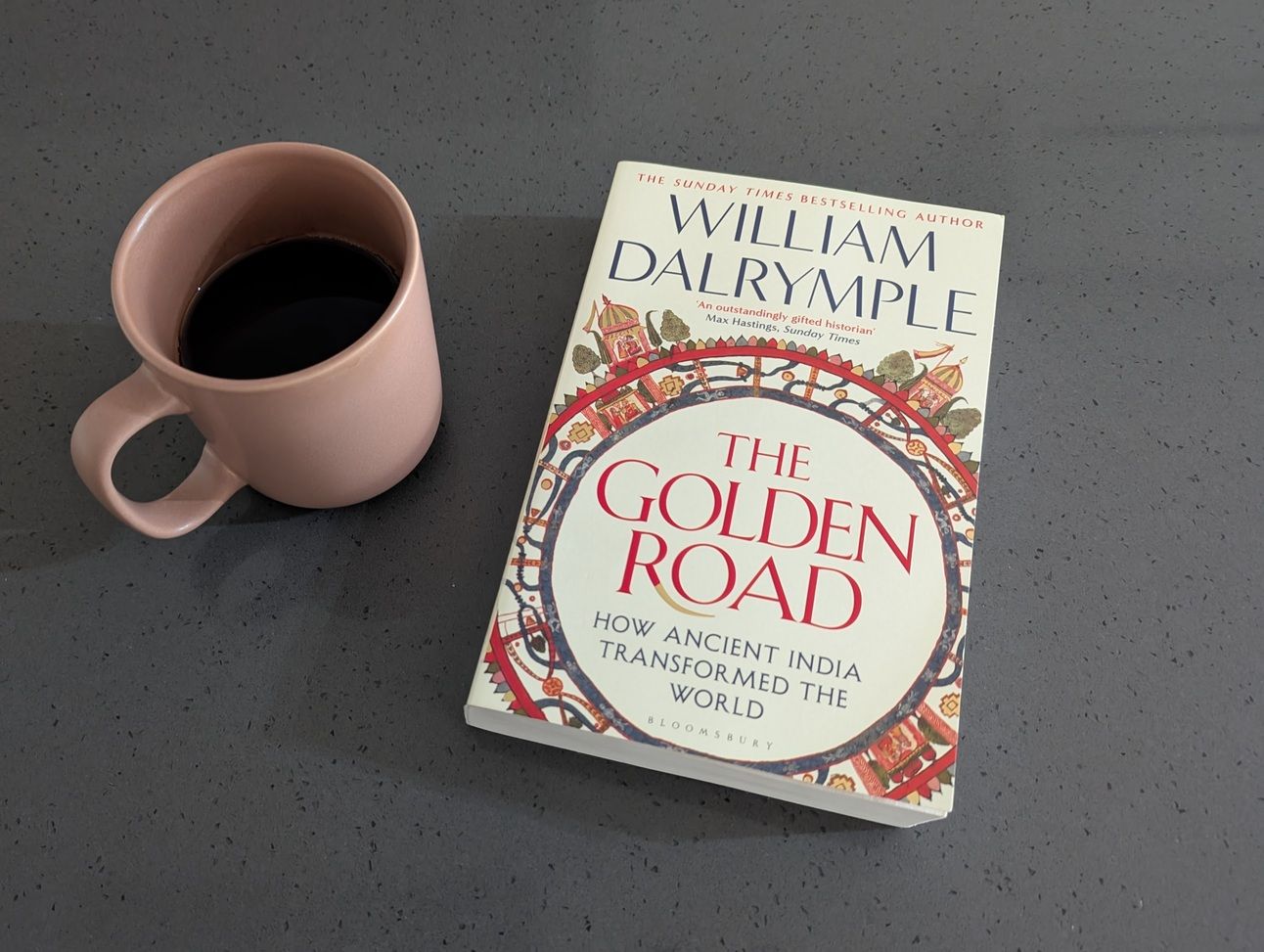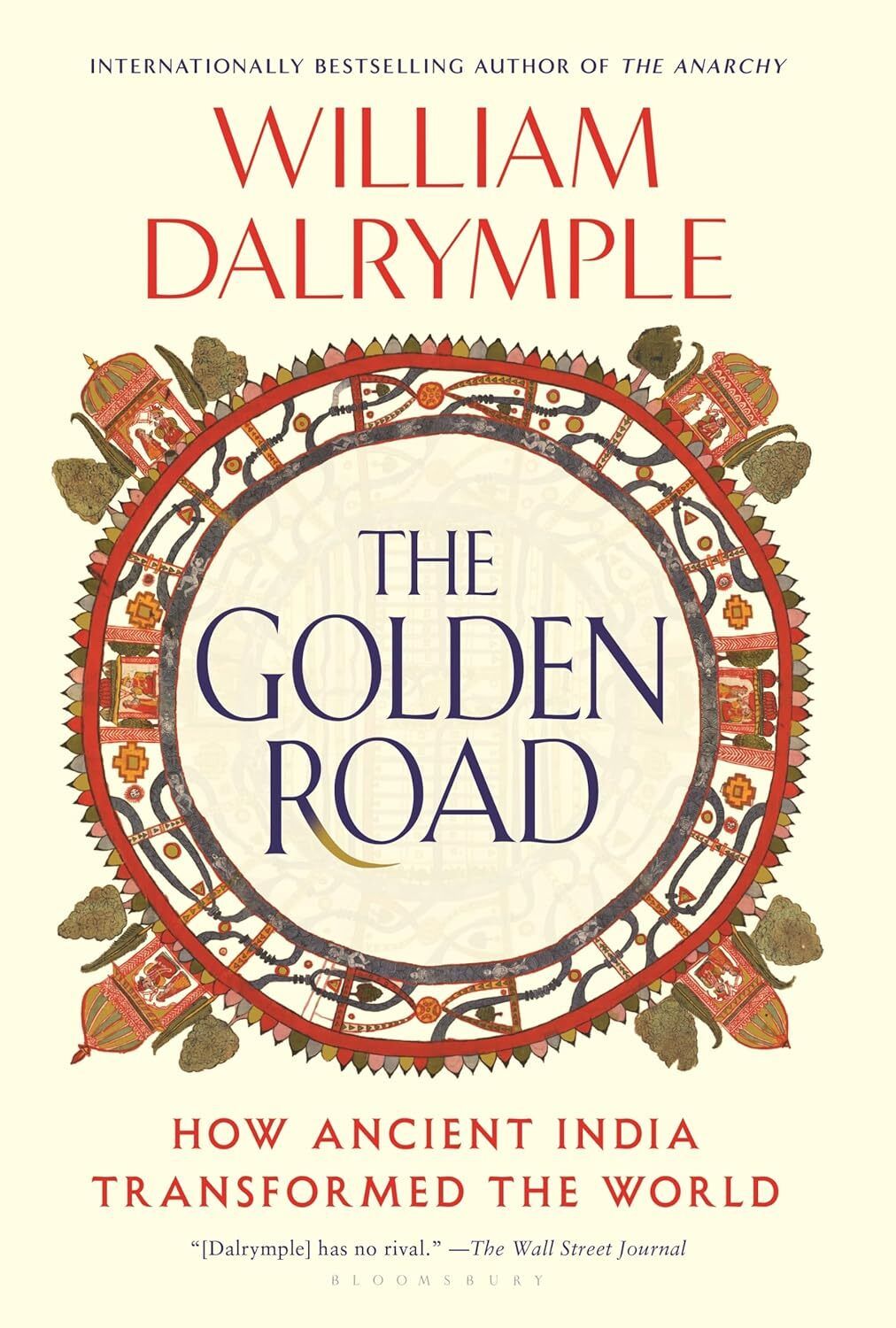
William Dalrymple’s introduction to The Golden Road opens with the words of the seventh century Chinese Buddhist monk Xuanzhang: “People of distant places, with diverse customs,” he wrote, “generally designate the land they most admire as India.”
From there the author is off exploring the rise and influence of India on China, southeast Asia, the Roman empire, Muslim rulers from India itself to Spain, and from there into medieval Europe from 250 BC to 1200 AD. Indian ideas, culture, art, technology, religion, language, mathematics, architecture and astronomy spread widely and were adopted and innovated on by peoples throughout Europe and Asia.
Much of this soft-power “Indosphere” of influence (soft-power meaning not as a result of conquering) has its basis in the position of the Indian subcontinent in the middle of a sea route that facilitated the movement of goods, people and ideas. This sea route is the Golden Road of the book’s title. Dalrymple convincingly lays out the case for the Golden Road preceding, and far surpassing in importance, the so called “Silk Road”, the land route for trade between China and the West.

Author and historian William Dalrymple (photo source: The author’s web site)
To the Roman Empire went jewels, spices. silk, cotton, teak and sandalwood from India, usually in exchange for gold. Roman coins, Dalrymple notes, “are found today by archeologists in their tens of thousands, as they have been since the eighteenth century when [the] East India Company…report[ed] the discovery of ‘five cooly-loads’ of Roman gold coins.” Sometimes the trade was carried on Roman ships, but many times it went on Indian ships. The largest ancient Indian ships were big enough to carry 1000 people or 3000 amphorae (the Greek / Roman clay jars that held trade goods (mainly wine) in those days).
To China went teachers and monks who inspired Buddhist converts to travel back to India for education and enlightenment at the monastery university of Nolanda, which at the time wasvprobably the greatest center of education in the world, with a library holding at least as many works as the famous one at Alexandria. Nolanda drew students not only from China but from throughout southeast Asia.

The cover of the North American printed, hardcover edition, available April 29, 2025.
Dalrymple spends a good bit in the middle of the book exploring the Indian influence on the Khmer Empire of Cambodia, of particular interest to me as I had the opportunity to travel through Cambodia last year with my husband, and visit the Hindu / Buddhist temples at Angkor Wat, the largest religious complex in the world.
Also covered is the spread and adoption of the decimal number system and the concept of zero. Long thought in the west to be Muslim (particularly Arabic) innovations, these ideas in reality have their roots in Indian mathematics.
This is not a dry academic tome, instead its a quite readable and relatively short episodic history - just shy of 300 pages of narrative plus extensive notes. Anyone with interest in world history would find this to be a welcome work that expands our understanding of ancient cultures and gives India its due for its truly world-spanning ancient influence.
RATING: Four Stars ⭐⭐⭐⭐
RATING COMMENTS: A fascinating look at the influence of ancient India in religion, literature, mathematics and culture from the Red Sea to the Pacific.
WHERE I GOT MY COPY: I bought a copy at QBD Books, a book retailer in Australia, where the book was published in 2024. It will be available in North America in hard cover and ebook on April 29th of this year.
See What Others Think
Title: The Golden Road: How Ancient India Transformed the World
Author: William Dalrymple
Publisher: Bloomsbury Publishing
Publish Date: April 29, 2025
ISBN-13: 9781639734146
Publisher’s List Price: $29.69 Hardcover and $23.09 Ebook (Price as of January 16, 2024)
